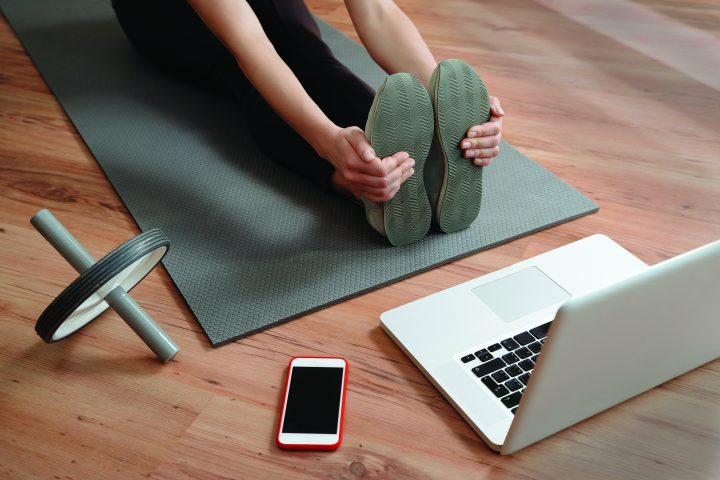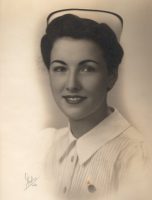How regular activity can increase sleep quality and quantity.
Takeaways:
- Working at night disrupts nurses’ circadian rhythms and impacts their physical and mental health.
- Nurses who work night shifts or rotating shifts should adopt evidence-based strategies to increase exercise and subsequently improve their health and well-being.
- Exercising with others can help improve motivation.
Work, sleep, eat, repeat is a common routine for nurses who work at night while others sleep. Exactly how many nurses work the night shift is unknown, but we do know that working at night disrupts nurses’ diurnal circadian rhythms. The result can include detrimental effects on their physical and mental health and an increased risk for many chronic conditions. Incorporating exercise into their routine can improve night shift nurses’ overall health.
Shift work effects
The U.S. Bureau of Labor Statistics defines night shift as the hours between 9:00 pm and 8:00 am. For most nurses, that means working between 7 pm and 7 am or 11 pm and 7 am. Staying awake during these hours disturbs the body’s circadian rhythm, resulting in poor sleep quality and an increased risk for cardiovascular disease, diabetes, and depression compared with nurses who work day shifts. Additionally, nurses who work night shifts report more work-related injuries and drowsy driving incidents than their counterparts on day shifts. The National Academy of Medicine recognizes that nurses working night shifts or rotating shifts experience performance deficits, such as medication errors, associated with sleepiness. In addition, these nurses may miss out on meetings, most of which are held during the day when they’re sleeping, or think that day staff don’t value or understand their work.
Night shift and physiology
Your circadian rhythm (sleep–wake cycle) is regulated by cortisol, the fight-or-flight hormone, which jumps into action when you feel stressed. It helps reduce inflammation, increase blood sugar, regulate blood pressure, and manage how your body uses carbohydrates, proteins, and fats. It also helps regulate your body’s internal clock. Normally, cortisol levels are higher in the morning, rising in the early morning to help with awakening and then slowly decreasing throughout the day. Typically, cortisol levels peak around 8 am and are at their lowest around 3 am. Nurses who work at night and sleep during the day frequently see the opposite effect—their cortisol levels remain elevated throughout the evening and decrease in morning.
Long-term circadian rhythm disruption results in cortisol secretion pathway hyperactivity and chronic cortisol elevation. Difficulty sleeping leads to further disruption of the body’s cortisol levels, creating a pattern of sleep deprivation and cortisol disruption. Abnormal cortisol levels also can increase the body’s inflammatory responses, increasing the risk for chronic conditions, such as diabetes, certain cancers, and cardiovascular diseases (specifically, atherosclerosis and hypertension).
Increased appetite associated with cortisol disruption can lead to poor dietary choices that are higher in fat and carbohydrates. Frequently, nurses rely on excessive levels of caffeine to remain awake, which can further compound sleep deprivation. Over time, this eventually leads to weight gain.
Exercise benefits
Exercise has been shown to reduce stress and anxiety, as well as reduce weight and improve cardiovascular health. According to Gabriel and Zierath, exercising at work has a positive effect on night-shift workers’ exercise behaviors, stress levels, and musculoskeletal functioning. They also report that habitual exercise, regardless of intensity, performed at approximately the same time each day can help “reset” the body’s internal clock, improve sleep quality, and reduce the hormonal imbalances that lead to inflammation.
Recommendations
The Physical Activity Guidelines for Americans recommends that adults exercise by walking, running, dancing, and playing. Although even 5 minutes of physical activity has real health benefits, the recommendation is that adults get at least 150 minutes of exercise throughout the week along with muscle-strengthening activities on two or more days a week.
However, many night shift nurses say they feel too mentally and physically fatigued to exercise. The good news is that exercise isn’t one-size fits all—many options are available. (See Night shift exercise in action.)
Night shift exercise in action
The nurses working the night shift on our orthopedic unit focused on getting sleep rather than exercise, but that changed after a journal club discussion about an article on the consequences of night shift work on home, family, and social life. We decided to add exercise into our routine by starting a night shift group exercise program.
We hold group exercise sessions almost every night between 3:30 am and 4:30 am. We meet in the physical therapy gym in our unit after medication and patient care needs are met. We workout to a YouTube exercise video, usually about 6 minutes long, selected by a nurse or patient care technician. We stagger sessions so everyone who wants to can attend. Ancillary team members from other clinical areas sometimes join us.
These group exercise sessions have increased joy and camaraderie among our team members. Fitness leaders have emerged among the group. We already know which nurse or patient care technician will make us work hard for the full 6-minute session, resulting in good-natured groans and moans. We return to our patient assignments energized. It’s better than coffee.
How to begin
When starting an exercise routine, take it slow and try to have fun. Going all out might be acceptable for some. However, for most people who haven’t exercised in some time, high-intensity workouts may cause extreme muscle soreness and injury, which could reduce motivation and commitment. Enlist a workout partner to help make exercise a social activity, increase your enjoyment, and improve your motivation and adherence.
Where and when
Lack of time is one of the biggest barriers to initiating an exercise program. If possible, find opportunities to incorporate activity into your work routine. For example, go outside for a walk or climb some stairs during a break. A good starting recommendation would be to exercise for 10 minutes at a time, three times per shift, for a total of 30 minutes, 3 days each week. (See Working out at work.)
If you’re unable or uncomfortable with exercising at work, consider exercising before your shift. You may find that you feel more energized for work. According to Smith, some nurses who’ve tried exercising after their shift have found that they feel drained of energy and work out halfheartedly. However, a study by Torquati and colleagues found that for some Australian nurses, exercise after an especially tough night shift helped relieve stress. Nurses in this study also enjoyed cycling to work.
Working out at work
Follow these suggestions to find opportunities for physical activity at work:
- Keep moving throughout your shift.
- Make it a habit to take the stairs, not the elevator.
- Stand when you’re charting.
- Find a colleague to be your walking buddy, and take a break during your shift to “walk and talk” around the unit or the hospital. When the weather’s nice, and if it’s safe, walk outside.
- Count your steps. If you track your steps with an app or device when working night shift, bring a calculator because at 00:01 a new day starts and your steps are divided between two days (most step-tracking apps are set from 12:00 am to 12:00 am).
- Try the Johnson & Johnson Official 7 Minute Workout app (apps.apple.com/app/apple-store/id784797900) to incorporate a short exercise session at work.
- Join Healthy Nurse, Healthy Nation® (hnhn.org) to learn about more exercise activities and receive support from other nurses.
Join in
Nurses who work night shifts also might consider joining Healthy Nurse, Healthy Nation® (HNHN) Grand Challenge, the American Nurses Association’s national movement to improve the health and well-being of nurses. Physical activity is one of HNHN’s five health domains (the others are nutrition, rest, quality of life, and safety). Discussion boards, blogs, mini-challenges, and other options are available for connecting with nurses and taking action to improve your overall health.
Consider making “healthy night nurses” an agenda item for your night council meetings and including a quick exercise or stretch at each meeting. Torquati and colleagues found that talking about exercising had a positive influence on night-shift nurses’ exercise habits. To make it even more fun, create competitions or challenges. Track steps with each other or create nursing unit teams.
Reap the rewards
Investigate evidence-based strategies to increase exercise and improve your health and well-being. Find the right type of exercise for you—whether it’s solo, in a group, at a gym, at work, or at home. The more you enjoy your time exercising, the more likely you’ll stick with a program and reap the long-term rewards.
Brian Salle is an assistant nurse manager in the CTICU at Jersey Shore University Medical Center in Neptune, New Jersey. Susan H. Weaver is a nurse scientist at Hackensack Meridian Health Ann May Center for Nursing in Neptune. Jocelyn Martinez and Nancy Maina are night shift RNs at Jersey Shore University Medical Center.
References
de Cordova PB, Bradford MA, Stone PW. Increased errors and decreased performance at night: A systematic review of the evidence concerning shift work and quality. Work. 2016;53(4):825-34. doi:10.3233/WOR-162250
d’Ettorre G. Needlestick and sharp injuries among registered nurses: A case-control study. Ann Work Expo Health. 2017;61(5):596-9. doi:10.1093/annweh/wxx027
Flahr H, Brown WJ, Kolbe-Alexander TL. A systematic review of physical activity-based interventions in shift workers. Prev Med Rep. 2018;10:323-31. doi:10.1016/j.pmedr.2018.04.004
Gabriel BM, Zierath JR. Circadian rhythms and exercise—Re-setting the clock in metabolic disease. Nat Rev Endocrinol. 2019;15(4):197-206. doi:10.1038/s41574-018-0150-x
Gander P, O’Keeffe K, Santos-Fernandez E, Huntington A, Walker L, Willis J. Fatigue and nurses’ work patterns: An online questionnaire survey. Int J Nurs Stud. 2019;98:67-74. doi:10.1016/j.ijnurstu.2019.06.011
Grice-Swenson D. The Culture of Night Nursing [dissertation]. Ann Arbor, MI: Adelphi University; 2015. proquest.com/openview/7a874a21978c9381b3b7dc09a40429bf/1?pq-origsite=gscholar&cbl=18750
Institute of Medicine. Keeping Patients Safe: Transforming the Work Environment of Nurses. Washington, D.C.: The National Academies Press; 2004.
Jørgensen JT, Karlsen S, Stayner L, Hansen J, Andersen ZJ. Shift work and overall and cause-specific mortality in the Danish nurse cohort. Scand J Work Environ Health. 2017;43(2):117-26. doi:10.5271/sjweh.3612
Kim SW, Jang EC, Kwon SC, et al. Night shift work and inflammatory markers in male workers aged 20-39 in a display manufacturing company. Ann Occup Environ Med. 2016;28:48. doi:10.1186/s40557-016-0135-y
Manenschijn L, van Kruysbergen RGPM, de Jong FH, Koper JW, van Rossum EFC. Shift work at young age is associated with elevated long-term cortisol levels and body mass index. J Clin Endocrinol Metab. 2011;96(11):E1862-5. doi:10.1210/jc.2011-1551
McMenamin TM. A time to work: Recent trends in shift work and flexible schedules. Mon Labor Rev. 2007;130(12):3-15.
Powell I. Can you see me? Experiences of nurses working night shift in regional Australian hospitals: A qualitative case study. J Adv Nurs. 2013;69(10):2172-84. doi:10.1111/jan.12079
Smith S. Working the night shift—Fitting in fitness/nutrition/sleep. Military.com. 2021. military.com/military-fitness/health/working-the-night-shift-fitting-in-fitness-nutrition
Tobaldini E, Fiorelli EM, Solbiati M, Costantino G, Nobili L, Montano M. Short sleep duration and cardiometabolic risk: From pathophysiology to clinical evidence. Nat Rev Cardiol. 2019;16(4):213-24. doi:10.1038/s41569-018-0109-6
Torquati L, Kolbe-Alexander T, Pavey T, Persson C, Leveritt M. Diet and physical activity behaviour in nurses: A qualitative study. Int J Health Promotion Edu. 2016;54(6):268-82, doi:10.1080/14635240.2016.1169943
U.S. Department of Health and Human Services. Physical Activity Guidelines for Americans. 2nd edition. 2018. health.gov/sites/default/files/2019-09/Physical_Activity_Guidelines_2nd_edition.pdf
Vitale SA, Varrone-Ganesh J, Vu M. Nurses working the night shift: Impact on home, family and social life. J Nurs Educ Pract. 2015;5(10):70-8.
Zou H, Lan X, Li C. Relationship among anxiety, depression, social and self-efficacy in night-shift nurse. Int Med J. 2016;23(3):275-8.


















